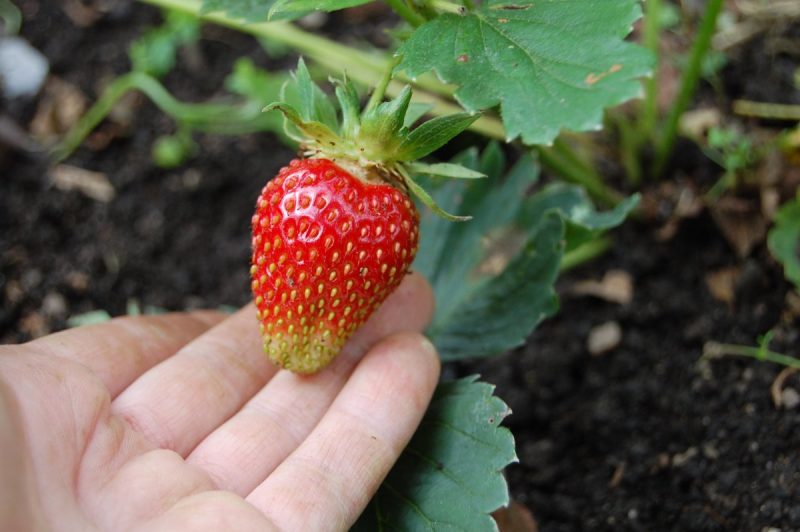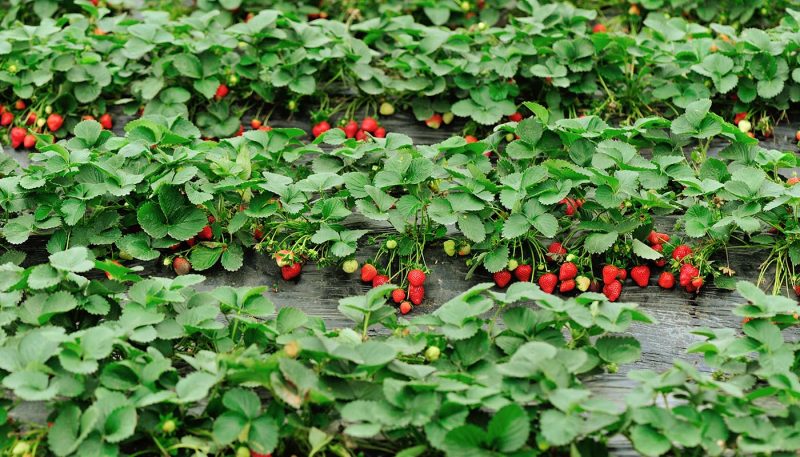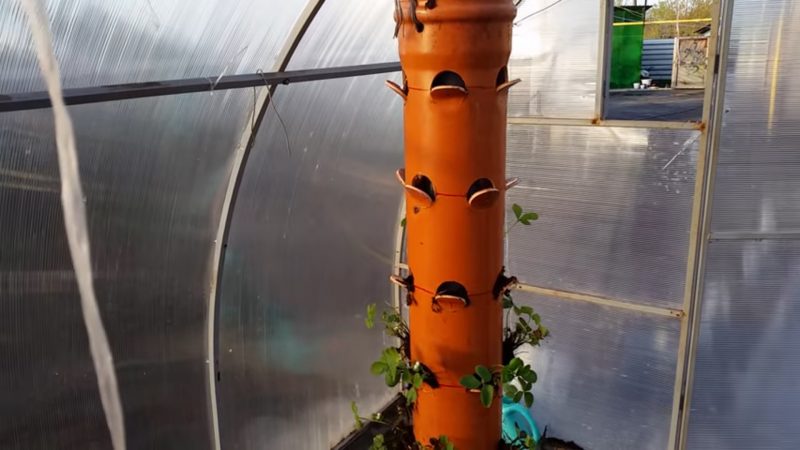Every year, summer residents eagerly await the strawberry harvest. But the time for picking berries is very short, and the result is not always satisfactory. At times, households are not able to feast on their own. Meanwhile, the cultivation of strawberries is a fascinating process, which, subject to the rules of agricultural technology, invariably gives a good result. Moreover, it is possible to plant a berry culture not only on beds in open ground, but also in greenhouses, in PVC pipes and even in containers on the balcony.
Material Content:
Features and methods of growing strawberries
Today it is difficult to find a summer cottage on which garden strawberries would not grow (usually it is called strawberries). But this option is not suitable for everyone. Someone has poor land on the site, someone gets out too rarely and cannot properly care for landings. And although strawberries are unpretentious, they also need to be protected from diseases and pests, to loosen, water, and fertilize.
- Delicious berries can be grown in greenhouses, and on an industrial scale.
- If you correctly plant garden strawberries on the balcony, the harvest will be enough to please the children.
- All year round at home, bushes can bear fruit on the windowsill. Here, of course, there will be few berries, but in winter it will be possible to recall the taste of fresh strawberries, and tea with it will be tasty and aromatic.
- Strawberry plantation in PVC pipes looks unusual and even beautiful. This method of growing has its advantages.
Usually gardeners acquire seedlings. However, a good way is to grow berries from seeds. This allows you to significantly save and breed new varieties. They plant seeds in late February or early March.
Let's consider each of the mentioned options separately.
Year-round in the greenhouse
This method is suitable for those who are passionate about business, interested in collecting large crops and have certain means. After all, you have to build a full-fledged greenhouse. If you conduct heating there, then you can have berries all year round. In addition, drip irrigation will cost. It will need to be arranged in order to moisten the soil and maintain humidity at the right level.
In a greenhouse, it makes sense to grow only repairing varieties, if you plant ordinary ones, it will not pay off. It should be remembered that a repairing strawberry that continuously bears fruit does not live longer than one season. After this, the greenhouse will need to be cleaned, processed and prepared for new plantings.
Strawberries in a greenhouse that are not heated can be grown before severe colds occur. When creating such “artificial” conditions, neither summer drought, nor low temperatures, nor long rains can damage the berries.
The disadvantages of the method include the need for careful care. The greenhouse should be regularly ventilated, treated with bushes from diseases that are easy to “pick up” in a warm, humid environment. This is especially true for fungi and viruses.
- The beds in the greenhouse must be made high, leaving a furrow for the hose between the rows through which drip irrigation will be carried out.
- The distance between the bushes is desirable to lay 15 - 20 cm.
- Before planting, the soil is fertilized. In the future, nutrients can be added to water for irrigation.
Varieties that give a large number of mustaches are not recommended to be grown in a greenhouse, otherwise the plantings will be too dense.
Outdoor cultivation
This method is the most common. Today, breeders have bred such varieties that it is possible to grow strawberries in open ground in Russia almost everywhere.
An unpretentious plant quickly covers the ground with a green carpet, so without much effort you can grow a whole plantation on your site.
It is not difficult to take care of strawberries, the root system breathes with this method of planting, and the air circulation between the bushes is good. Plants are less sick, give abundant crops. And the problems are easy to notice, after which remove the diseased strawberries and replace them with new seedlings.
The disadvantages include the need to regularly water the plantings - you must not allow the soil to dry out. We will also have to devote time to weeding and loosening.
- Planting strawberries is recommended in well-lit areas.
- It is advisable that the soil is not too heavy, clay - water will stagnate in it. Light sandy soils will need to be additionally enriched with nutrients.
- Although the "carpet" method of growing is practiced everywhere, it is better to make beds. So the strawberries will receive more light, and the bushes will be at the right distance from each other (25 - 30 cm), the berries will be clearly visible, and picking them will not be difficult.
Another option is to make a high fenced bed, fill it with nutritious soil. In this case, it will be possible to get a large crop even from a few meters.
It is interesting:gray fescue: planting and care
In PVC pipes horizontally
An original method that has many advantages:
- Landings look beautiful and neat.
- You can get a good crop even in a small area.
- If necessary, the structure is easy to move to another place.
In order to grow strawberries in this way, you will need pipes of different diameters (a narrower one can be replaced with a hose trimmer).
- Small holes are made in the hose (or narrow pipe) through which watering will be carried out.
- Then the hose is wrapped in burlap so that the roots of the strawberries do not sprout into these holes.
- In a large pipe with a drill, holes 7 to 10 cm are made for planting. And small holes on the underside so that excess fluid drains into the ground.
- Then a hose is inserted inside the pipe, and the remaining space is filled with high-quality soil. Side holes must be closed so that the soil does not spill out.
- Strawberry seedlings are planted in the holes. Thus, there will always be a certain distance between the bushes, picking berries will not be difficult, and watering (including fertilizing, fertilizers diluted in water) can be done through a hose.
Gardeners also do without an internal hose, watering plants through holes in the pipe.
How to grow strawberries on the balcony
Growing strawberries on the balcony in recent years has become very popular. You can do the breeding of berries and at home, on the windowsills. But here plants will receive less light, and as a rule, only a few bushes are planted at home.
Balcony or loggia give much more opportunities. It is only important that they do not go north (the plants will not have enough light), and not be too much drafted.
- According to Dutch technology, strawberries are planted in containers with soil - in flower pots or in deep boxes for seedlings. Also on the balcony you can use PVC pipes, multi-tiered floor pots, reliably fortified planters, special hanging pockets and phytomodules. Usually, green residents are transferred to the balcony no earlier than the end of April or beginning of May.
- Each plant will require about 3 liters of soil, and the distance between the bushes should be at least 15 cm. It is not recommended to use excessively large pots for planting - the plant will not be able to braid the roots of an earthen lump.
- It is easiest to purchase ready-made soil in a specialized store, but you can also prepare it yourself by mixing humus, river sand and sheet soil. The prepared soil mixture is disinfected by calcination, you can also water the earth with a solution of potassium permanganate.
- A layer of drainage should be placed on the bottom of the pot or drawer. The bushes are planted so that the "heart" is not covered with earth - it should rise slightly above it.
Strawberries for growing on the balcony are selected in different varieties. You can focus on those that bear fruit 1 or 2 times per season, or you can give preference to repairing varieties of continuous fruiting.
The proven varieties Queen Elisabeth, Queen Elizabeth 2, and Alexandria are especially popular.
Strawberries are watered 1-2 times a week (depending on the weather). The earth is periodically loosened. No more than 3-4 mustaches are left on each plant. On closed balconies, cross-pollination is required, which is conveniently done with a brush.
They feed strawberries with fertilizers specially designed for it. First, nitrogen, and later, in July, phosphorus and potash.
In the fall, plants are inspected, damaged ones are removed. Watering is stopped. In anticipation of winter, the boxes are covered with sawdust. If the region is characterized by severe frosts, it is better to remove strawberries in the barn, garage, cellar.
Read also:passion fruit at home
Strawberry cultivation is a fascinating and creative process, and a generous harvest will be a worthy reward to a caring owner.

















